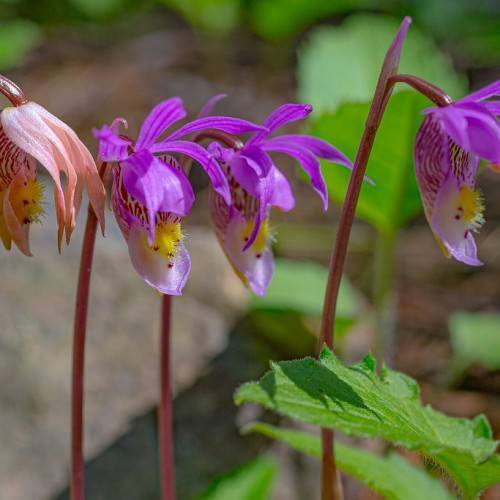
Fairy Slipper
Calypso bulbosa
Watering:
Frequent
Hardiness Zone:
Flowers:
Flowers
Sun:
full sun,part shade
Fruits:
Fruits Ready In Spring
Leaf:
Yes
Growth Rate:
Low
Drought Tolerant:
Yes
Salt Tolerant:
Yes
Care Level:
Medium
watering
The Two Flower Marsh Marigold (Caltha leptosepala de) prefers its roots to remain in permanently moist soil, so it should be watered regularly throughout the growing season. Early spring and mid-summer are usually the times when the Two Flower Marsh Marigold needs the most water. Water the plant deeply, so that it penetrates down to the roots. Water so that the soil is saturated and excess water is draining off. Allow the soil to dry out slightly before you water the plant again. Try to avoid watering the foliage of the plant as this can encourage fungal diseases. Be sure to water Two Flower Marsh Marigold consistently in order to keep your plant healthy and looking its best.
sunlight
Two Flower Marsh Marigolds are native to moist calcareous habitats in the western parts of North America. This species of Marigold needs full to partial sun to thrive. It prefers sunny or partially shaded locations where it can get at least 6 hours of direct sunlight per day. This plant can tolerate partial shade for the majority of the day, but will flower better if exposed to sunlight for much of the day. The best time to give the Two Flower Marsh Marigold direct sunlight is between 10am and 4pm in the summer and between 8am and 2pm in the winter. The sunlight should be allowed to gradually increase over the course of the season as the plants mature and the days get longer.
pruning
The Two Flower Marsh Marigold (Caltha leptosepala de) should be pruned in the fall or winter. Pruning should be light, cutting back about 1/3 of the plant to encourage it to produce a bushier habit. Make sure to cut away any dead, damaged, or diseased stems and remove any self-seeding woody stems as they appear.
